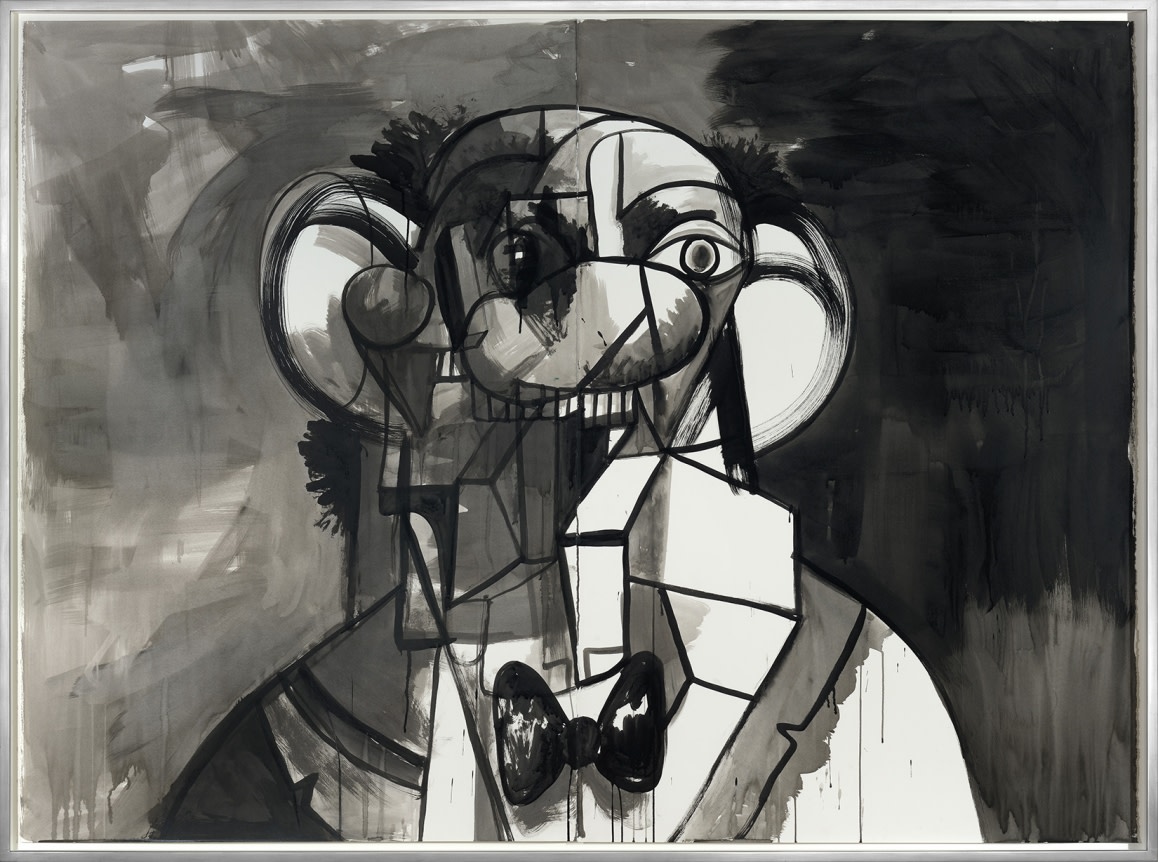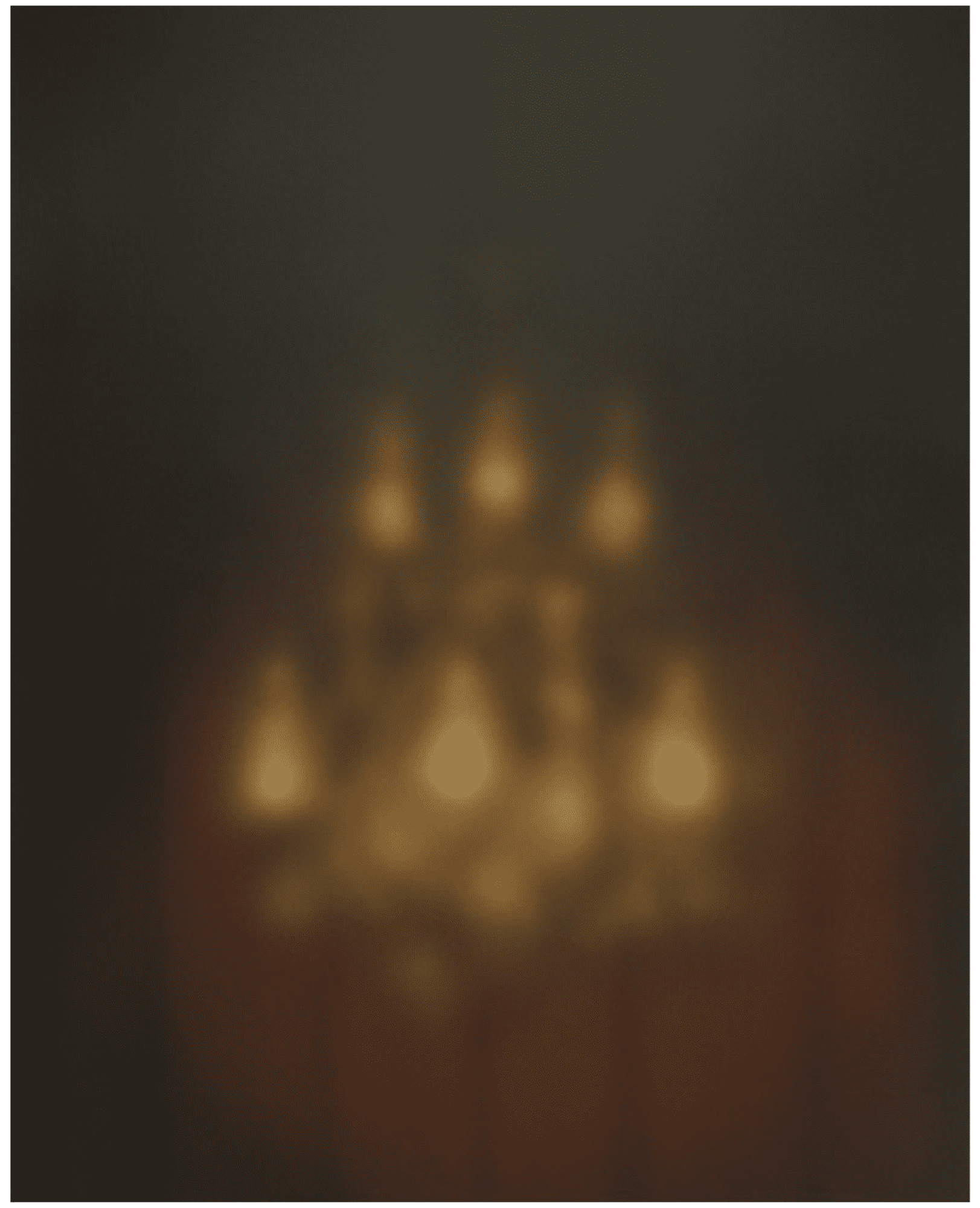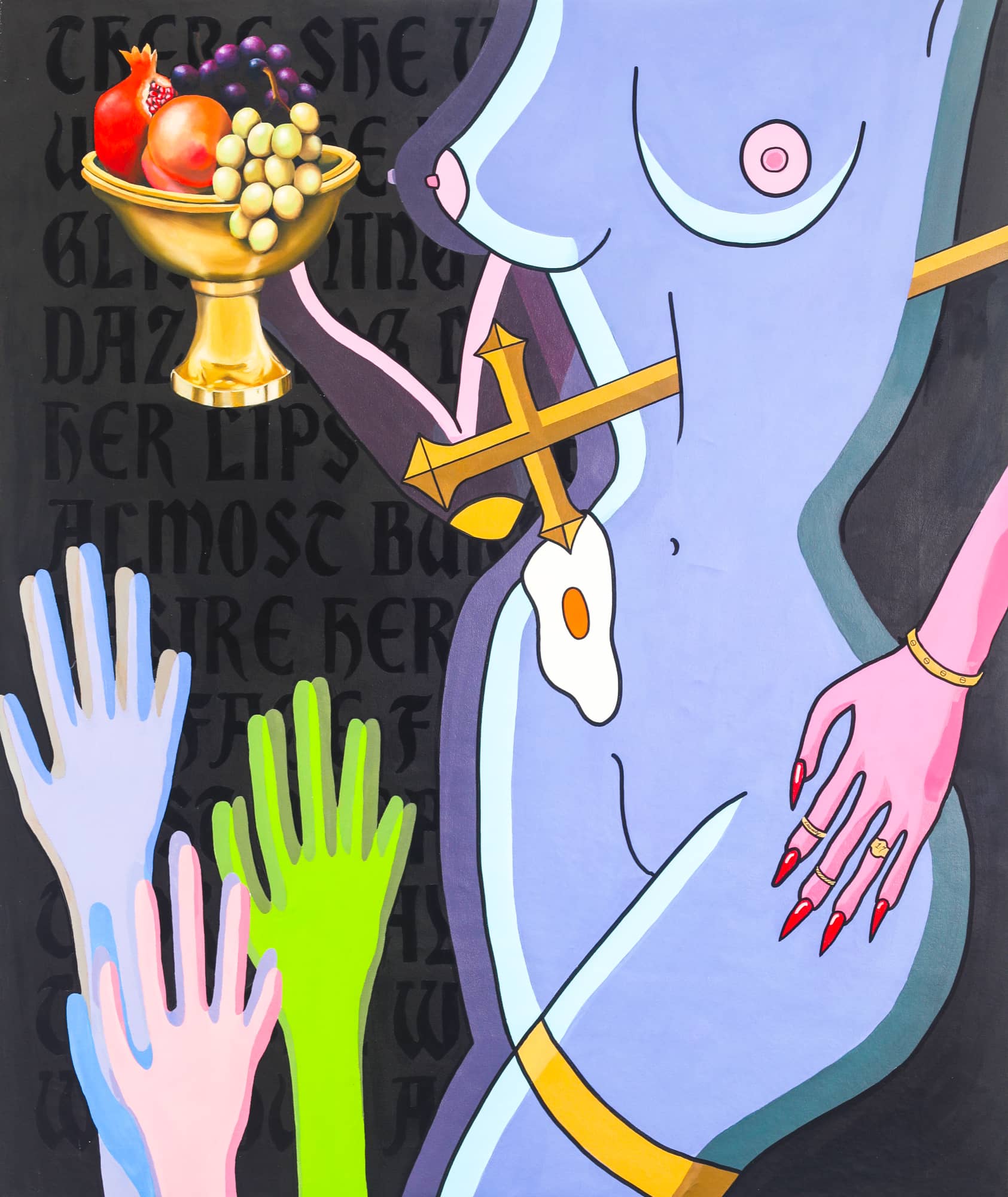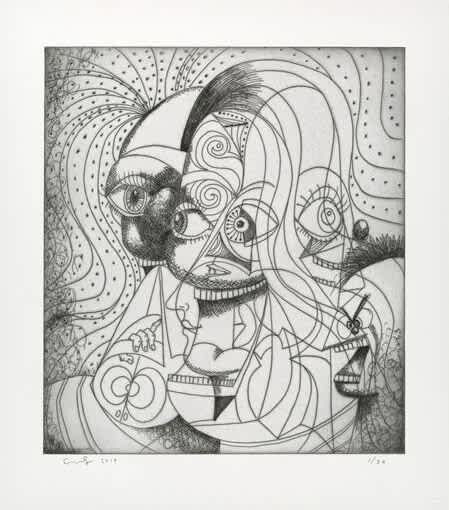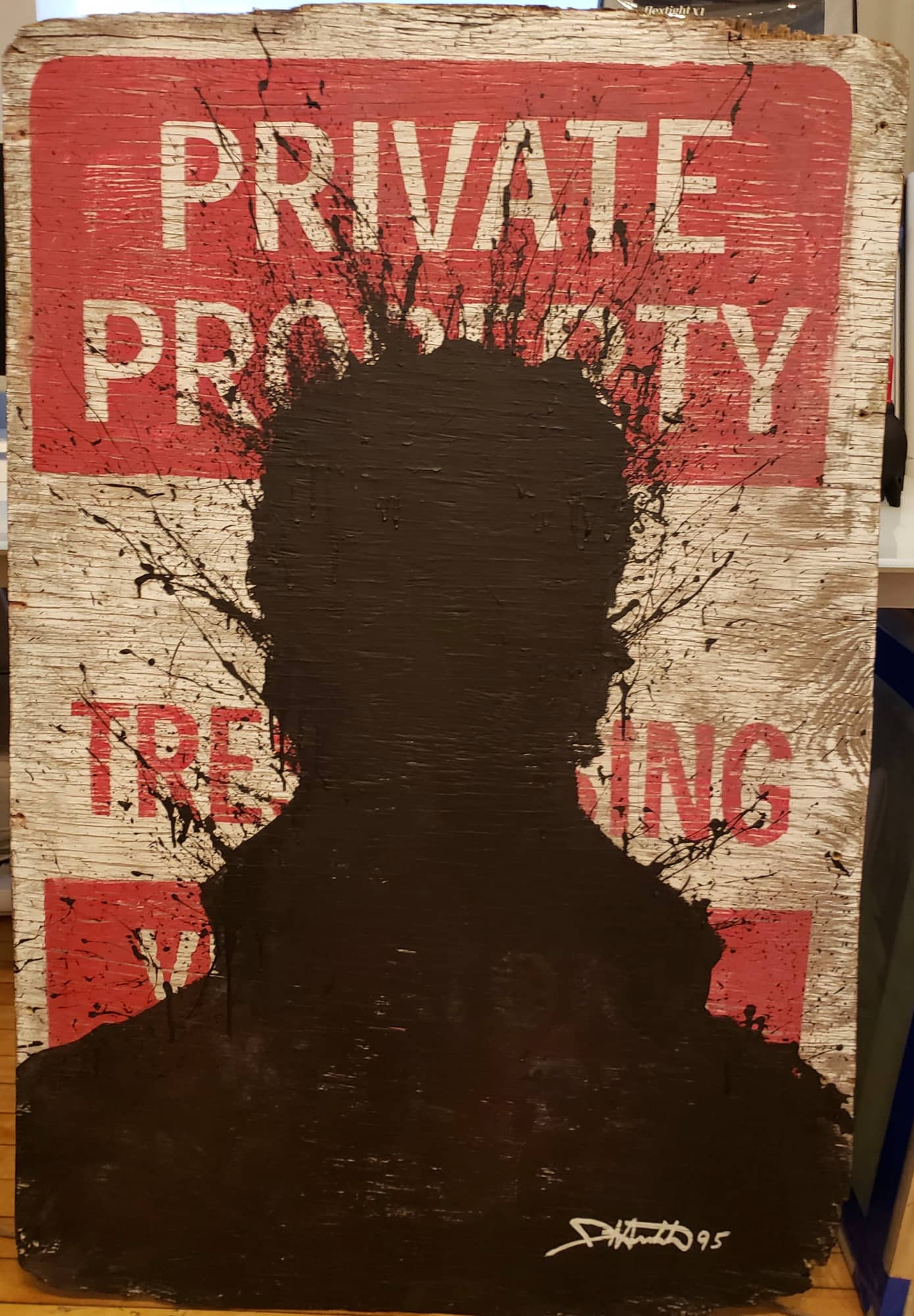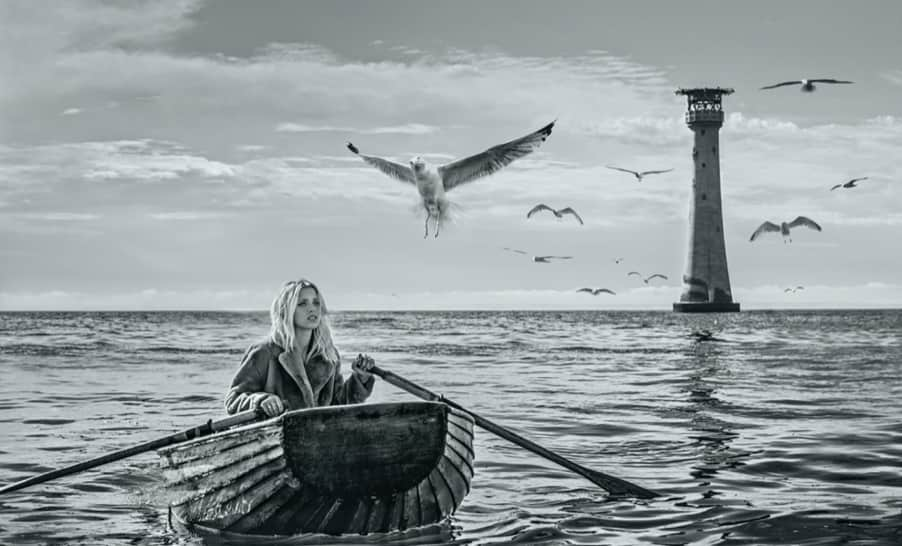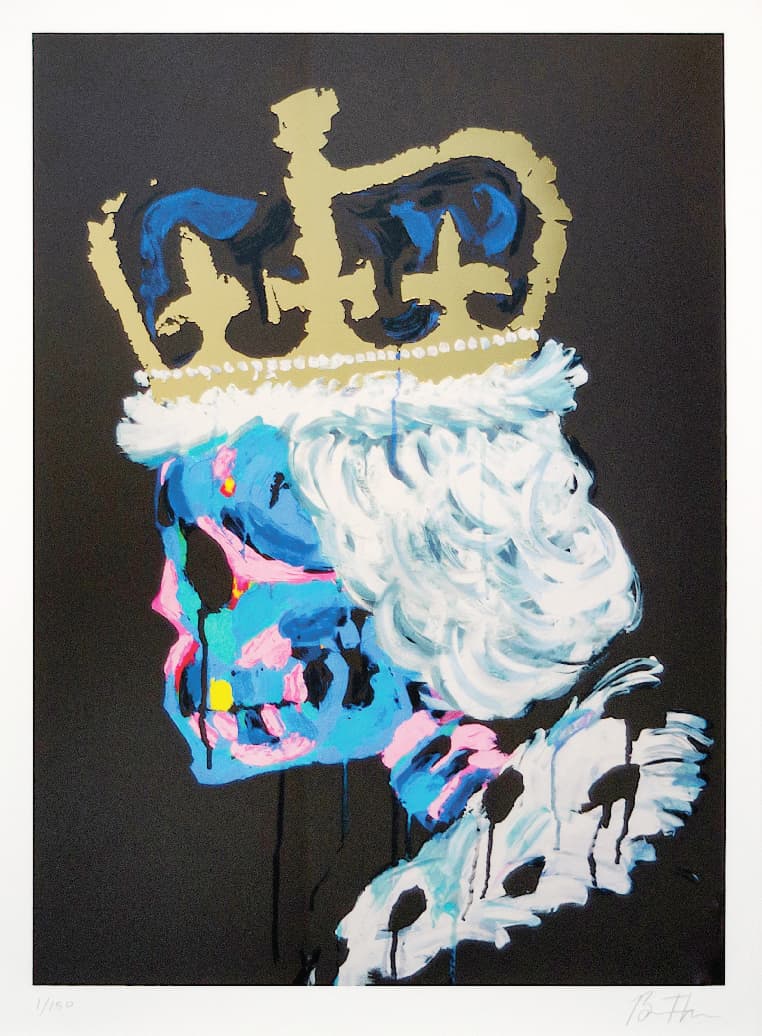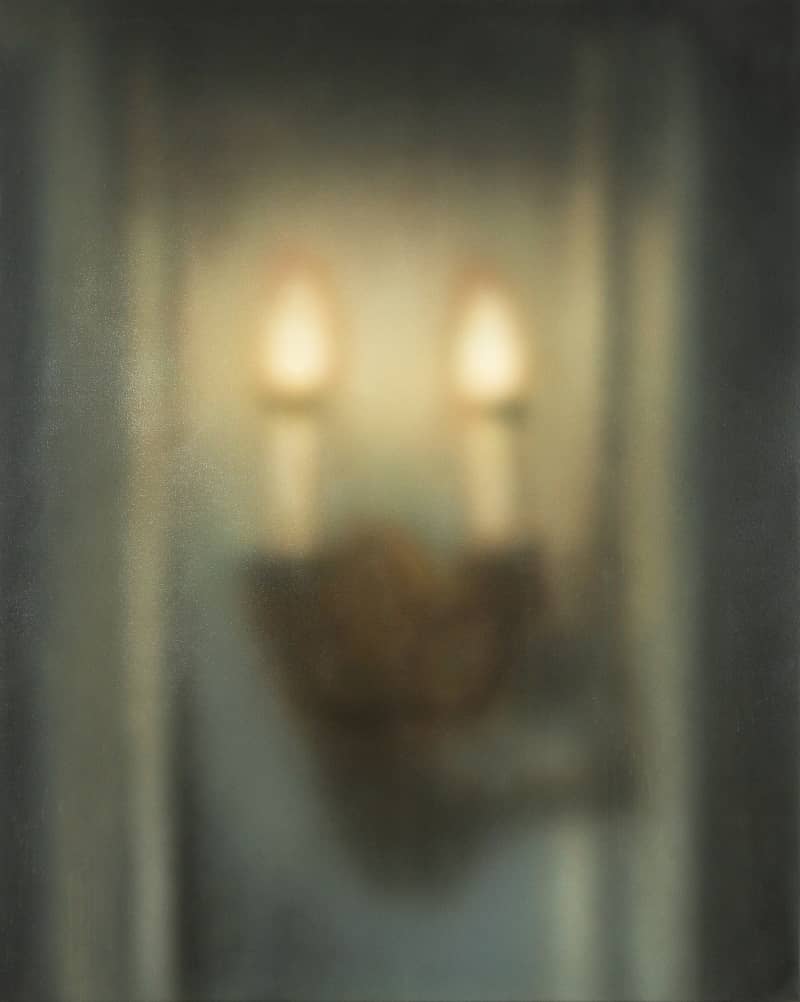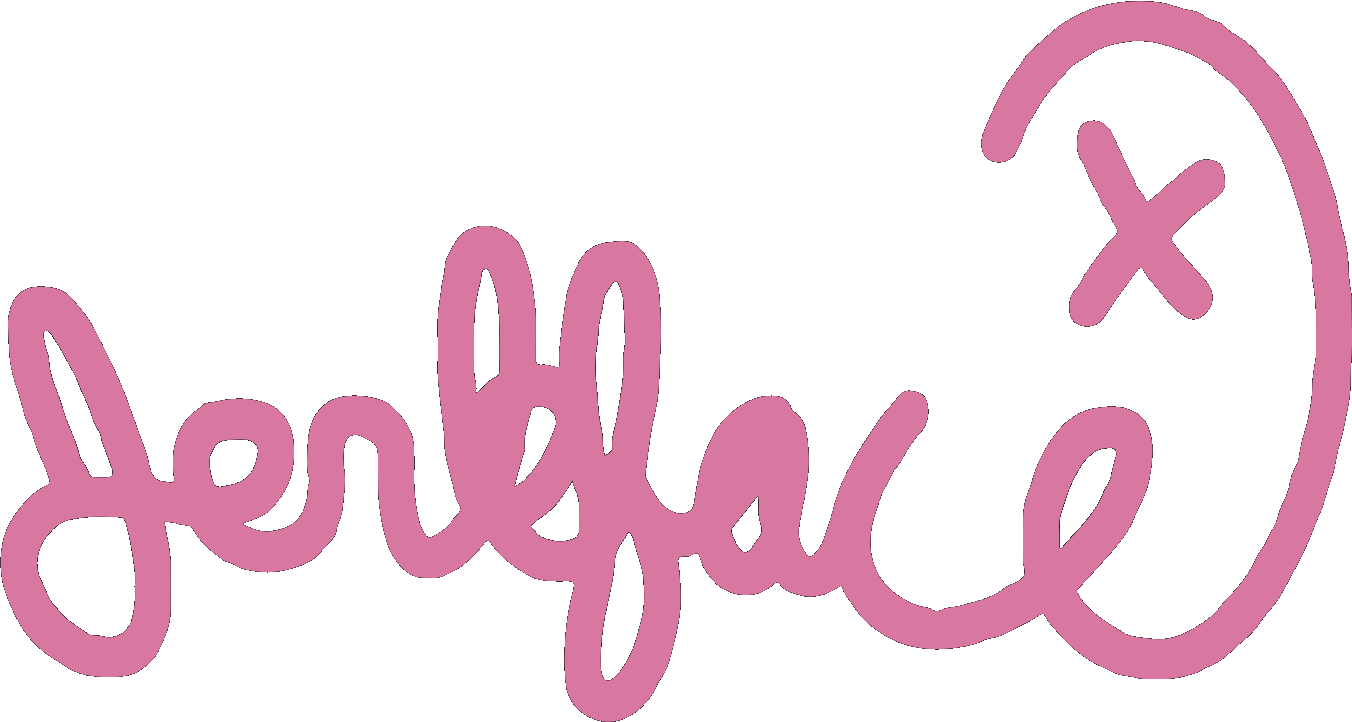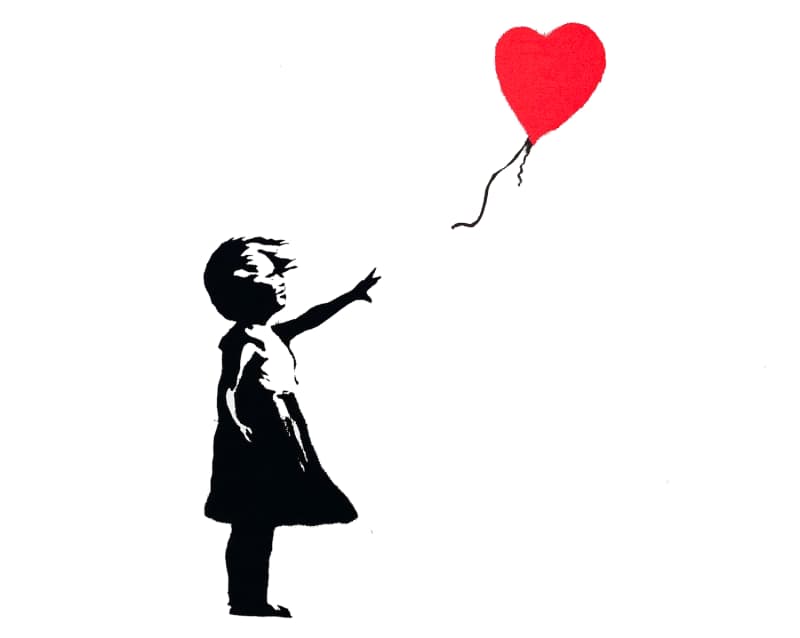From sublime landscapes to uncanny apparitions, we look at works of art inspired by all things macabre in time for Halloween.
The gothic genre has shocked and delighted since the 18th century. Featuring troubled protagonists and ghostly spectres, gothic novels are often set in isolated locations, promising mystery and intrigue. Ahead of Halloween, we look at artwork inspired by all things gothic, from the ethereal visions of the Miaz Brothers to the grotesque paintings of George Condo.
MIAZ BROTHERS, THE EFFULGENCE OF…, 2021
Known for their hazy portraits and paintings, the Miaz Brothers are inspired by the unknown. Taking recognisable items and rendering them with a blurred finish, the duo’s artwork challenges the viewers faculties of perception and interpretation. Out of focus, yet radiant in palette, The Effulgence Of… depicts a grand chandelier illuminating a darkened hallway. Utilising chiaroscuro, the artwork evokes a sense of mystery depicting a scene fit for the crumbling hallways of the castle of Udolpho or the dimly lit stone passageways of Count Dracula’s hideaway.
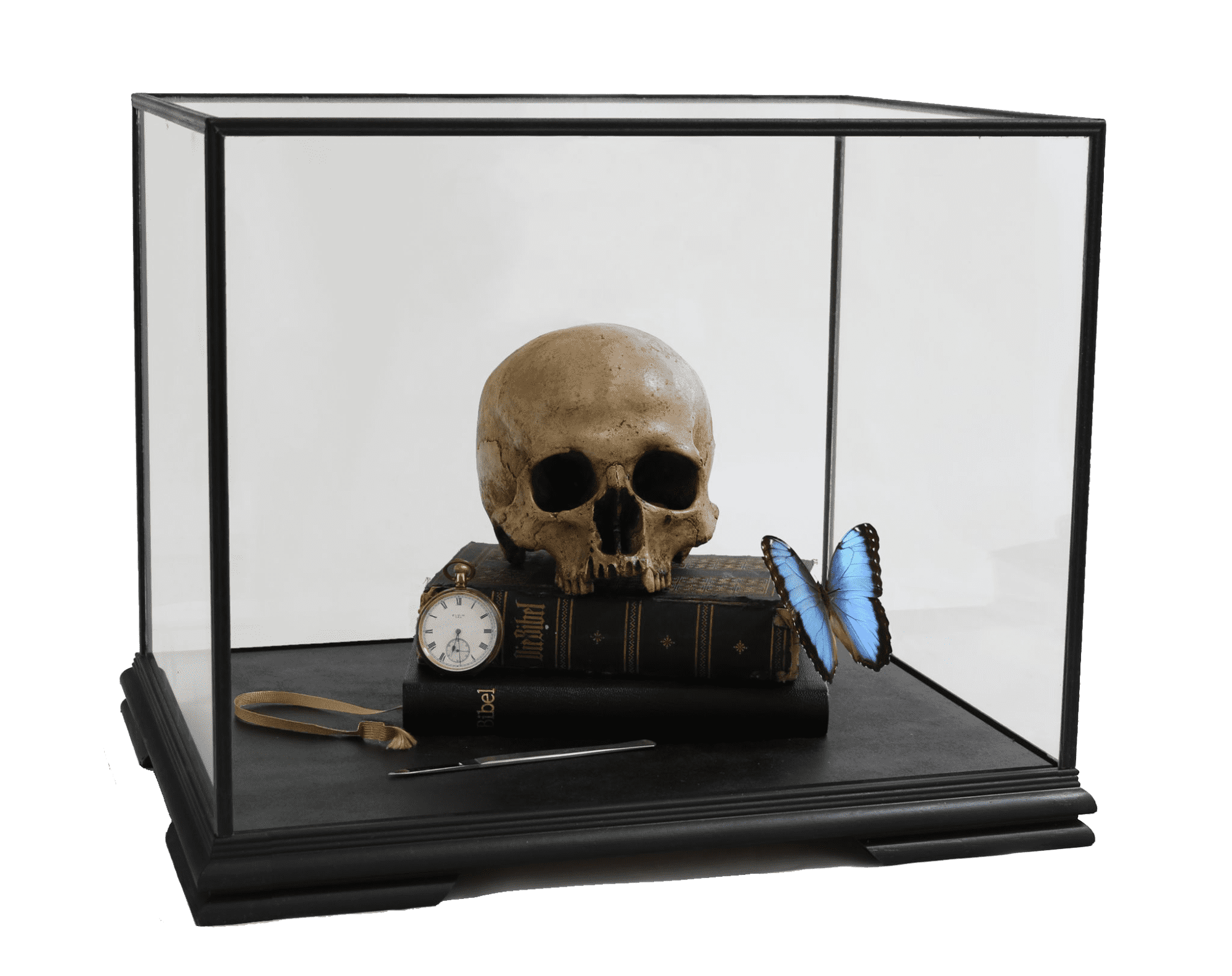
THE CONNOR BROTHERS, MEMENTO MORI WITH HEILIGE SCHRIFT AND MORPHO PELEIDES, 2021
Whilst not widely known by the public, James Golding and Mike Snelle – the duo behind The Connor Brothers – also created art under the guise of a second fictional character called Dr Schroeder. Fabled to have suffered a psychological breakdown following the traumatic death of a patient he misdiagnosed, Dr Schroeder underwent treatment at the infamous Kingsley Hall residential treatment centre, where he was encouraged to paint a portrait of his late patient in an attempt to free himself from the damage of her death. Sadly, the experiment failed and Schroeder became increasingly obsessed by death.Over the next 30 years, he put together a remarkable collection of memento mori, vanitas paintings and historical reliquaries. Memento Mori With Heilige Schrift And Morpho Peleides is one such artefact that the fictious doctor collected during this period.
GRACELAND LONDON, THE FRUITS OF HELL’S LABOUR, 2021
Fascinated by the unknown and the darker side of human psychology, Graceland London explores otherness in her vibrant paintings. Depicting part mythical creatures and part femme fatales, Graceland London's characters are at once completely alien and firmly rooted in the everyday realities of human life. With the inclusion of fruit and crucifixes alluding to biblical references, The Fruits Of Hell’s Labour investigates the idea of sin and otherness, in a way that is reminiscent of Shelley’s Frankenstein.
GEORGE CONDO, THE INSANE CLOWN, 2019
George Condo is known for his surrealist paintings, prints and sculptures, taking abstraction and pushing it to the limits of grotesque. The artist’s works are as fantastical as they are monstrous, with Condo himself describing his work as falling under the new genre of ‘psychological Cubism’. Capturing the multiplicity of his subjects, Condo’s characters refract and with each fragmented element comes a different dimension of the subject’s personality. With bulging eyes and toothy grins, The Insane Clown goads the viewer, while the frenzied composition and skewed perspective of the work becomes indicative of the psychological state of the disturbed clown.
RICHARD HAMBLETON, PRIVATY PROPERTY SIGN, 1995
Rising to fame in the late 1970s, Hambleton is best known for his Shadowmen series; a body of work that saw the artist cover New York City in haunting black figures. Placed at the end of dark alleyways or at the turn of sharp corners, Hambleton’s figures prompted many a pedestrian to look over their shoulder in the dark of the night. The artist’s menacing silhouettes could be found across the city, making passers-by jump in a moment of confusion. Instilling a sense of trepidation, Hambleton’s series played upon the innate human fear of the unknown; a trait that is core to many a gothic novel, including Jane Eyre and Wuthering Heights.
Inspired more by horror than the gothic, Yarrow’s eponymous photograph is an homage to Hitchcock’s American horror-thriller The Birds (1963). Recreating the iconic scene where Hendren is first attacked by a seagull, Yarrow expanded the narrative for his photograph by using a wooden rowboat and featuring Eddystone Lighthouse. The isolated location and the outmoded boat, places the photograph in an undisclosed epoch, with the timelessness of the shot adding to the foreboding terror.
BRADLEY THEODORE, THE CROWN, 2021
Executed in his iconic Día de los Muertos style, The Crown combines the vibrant colours of the joyous Mexican holiday with a more sombre narrative. Despite the vivacious palette, Theodore’s profile depiction of the skeletal king exudes a solemn tone. The drip of black paint tumbling down the king’s colourful cheek resembles a single tear, the dark pigment punctuating the pastel pinks and blues. The gold leaf crown exudes royal importance, yet the imprecise edge of the crown alludes to an unstable monarchy. Opulent yet crumbling, the idea of a kingdom in decline is a classic gothic trope that is explored in many infamous novels, including Horace Walpole’s The Castle of Otranto.
